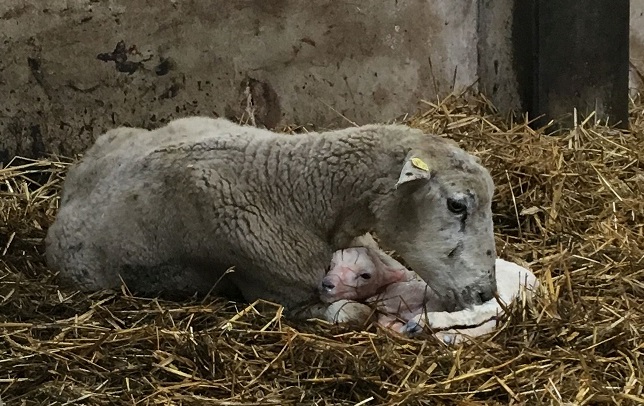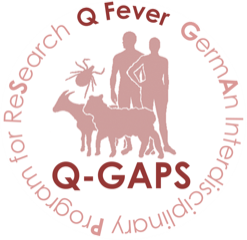
Photo: Newborn lamb ©Stiftung Tierärztliche Hochschule Hannover
Q fever is a notifiable animal disease in Germany and a zoonosis caused by the bacterium Coxiella (C.) burnetii. In particular, the pathogen is transferred by birth fluids and the afterbirth of infected sheep/goats and is a risk for human and animal health. If there is shedding of the bacterium by animals, it is important to prevent further spreading to other animals and humans in particular.
An infection with C. burnetii can be asymptomatic especially in sheep. Thus, an early detection of the pathogen in the flock/herd is often difficult for livestock owners.
Therefore, it is even more important to take the following Q fever symptoms in ruminants seriously:
Abortion and stillbirth
Birth of weak lambs/kids/calves
Retarded expulsion of the afterbirth
In the event of a suspected case your veterinarian can initiate diagnostics for Q fever. The most sensitive and meaningful test for verifying a C. burnetii infection is direct detection of gene material (DNA) of the pathogen by means molecular analysis of afterbirth material, dead lambs/kids/calves, vaginal swabs or preputial swabs.
At least the following measures should be taken when Q fever occurs in your flock/herd:
- Make sure births and shearing occur in closed premises.
- Store all after birth material immediately in a closed container until it is disposed of by animal by-products processing plants (rendering plants). The container should be cleaned and disinfected after having been emptied.
- Clean and disinfect your working clothes as well as your working material.
- Inform your colleagues and family members about necessary protective and hygiene measures.
- Post a sign near your stables: „Valuable livestock – Do Not Enter. Authorized Personnel Only."
- Prevent non-authorized people from getting access to your animals.
- Don't offer raw milk or raw milk products to consumers and stand down from drinking raw milk and eating raw milk products.
- Important: The process of pasteurisation results in inactivation of the pathogen.
- Store the dung for 9 months underneath foil as well as apart from any population, before you spread it on the fields.
- Have your herd/flock vaccinated against C. burnetii.
Tip (Germany): Please consult your Animal Diseases Fund (Tierseuchenkasse) for support for vaccination costs.
For further information please read our FAQs.


